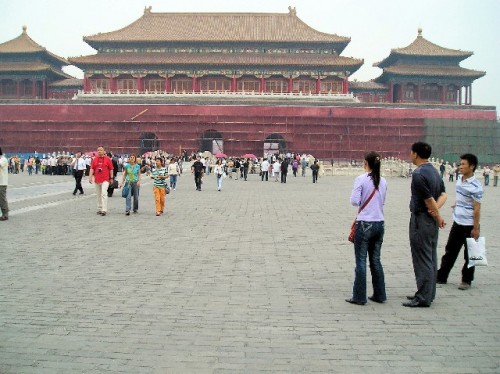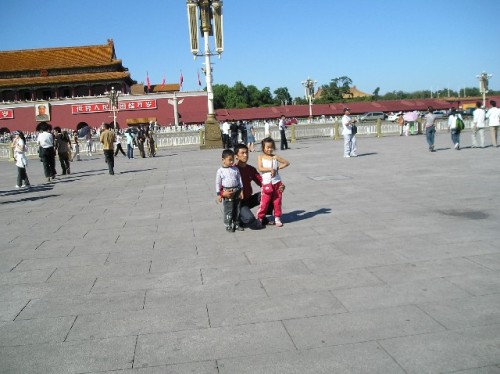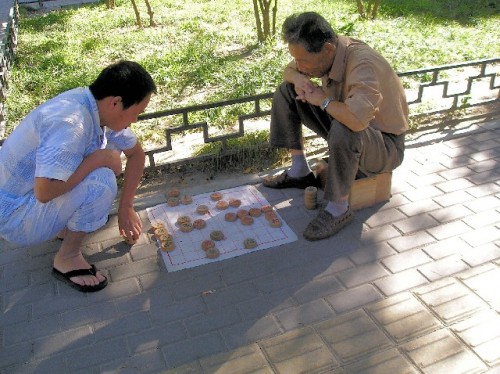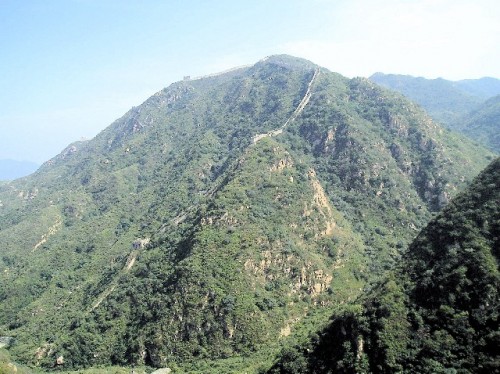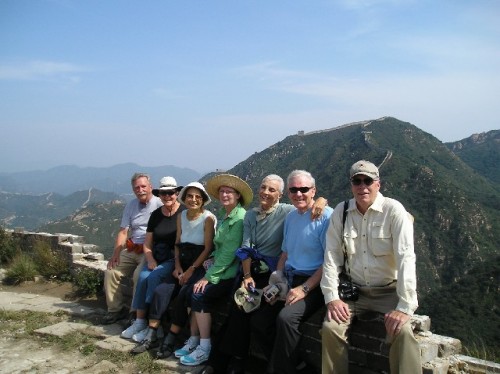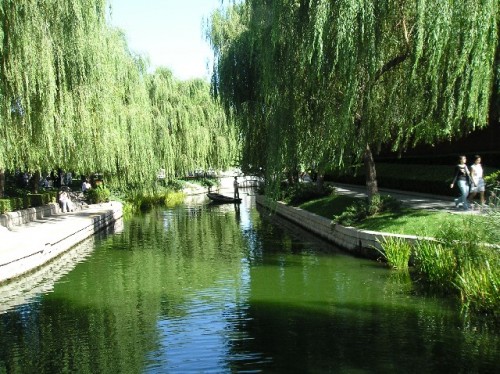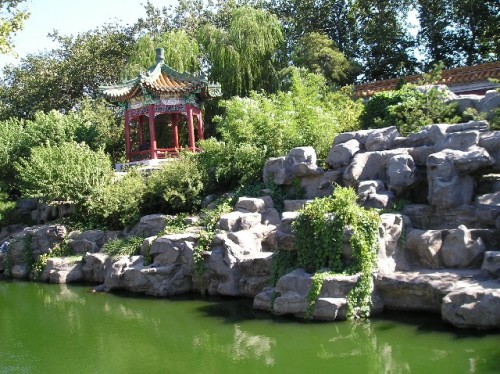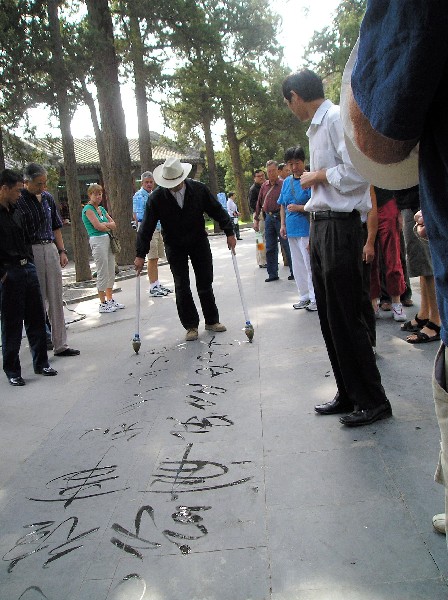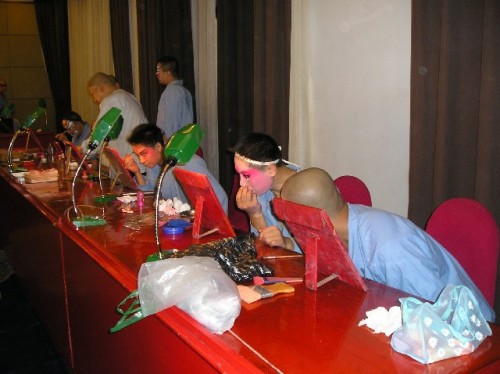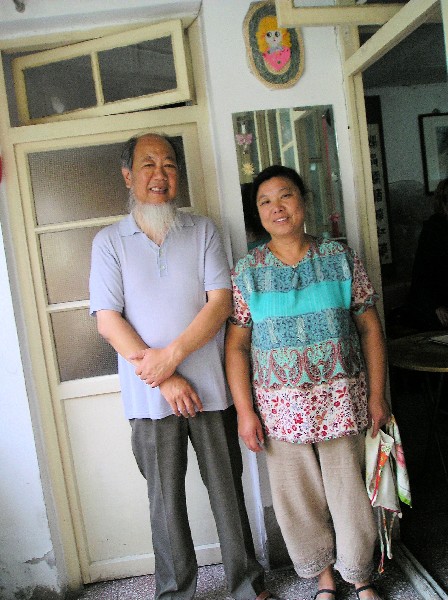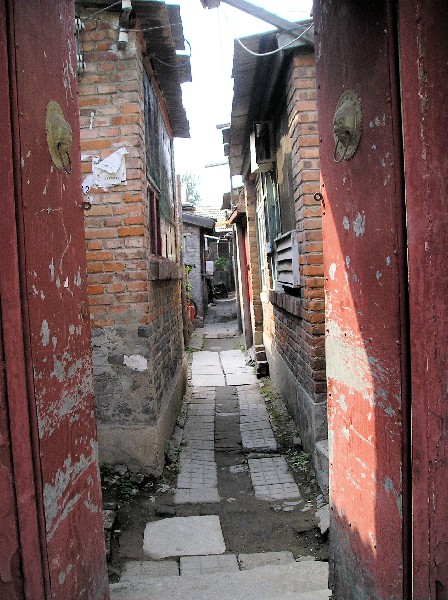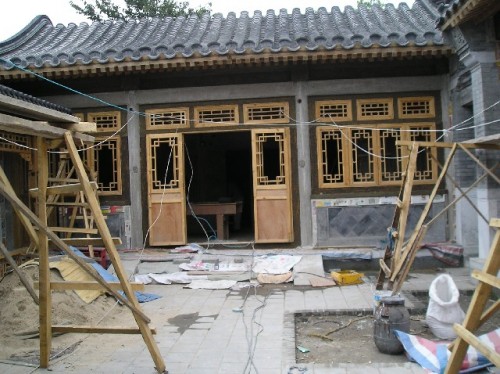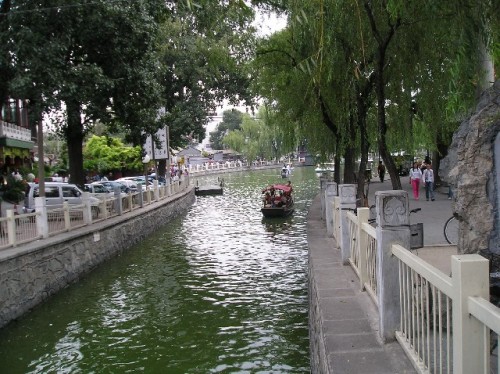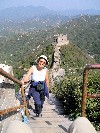Report on China: Part Two
Beijing to Xian
By: Zeren Earls - Jun 26, 2008
Upon arrival in my hotel room, I received a call from Susan Deng, our trip leader. She welcomed me in flawless English. She had learned English in grade school and perfected her verbal skills at university under American teachers, who called her Susan instead of her Chinese name, Ma. Susan traveled with us like a teacher on a school trip with her class; she loved to educate us about her country and watched over us to ensure that we were all happy and learning.
Beijing is the modern political and administrative center of China. It is laid out in concentric circles, the innermost being the Forbidden City and the surrounding Imperial City. A giant portrait of Mao hangs over the Gate of Heavenly Peace, which opens out on to Tiananmen Square, the world's largest public gathering place holding over a million people. Chairman Mao's portrait presides over the Square, across from Memorial Hall, where the body of the1949 founder of the People's Republic is entombed. On a drizzly weekday there were long lines of people waiting to pay their respects to the leader. A towering monument to the Heroes of the People, a granite obelisk honoring those who died in the Communist Revolution, is a prominent landmark of the Square.
As we walked about in the drizzle, peddlers descended on us to sell umbrellas. If we declined, then they pushed forth with postcards or some other trinket. Many tour groups as well as workers populated the Square. The latter were installing bleachers and flowerpots in preparation for the National Day on October 1, commemorating the founding of the People's Republic, the beginning of a holiday called the Golden Week.
Much of the Forbidden City was under restoration. We walked around courtyards, admired ornate roof constructions with curved ends and fanciful corner structures with dragon motifs, and crossed over an inordinate number of thresholds built to keep evil spirits from entering the buildings. According to folklore, evil spirits are tiny and cannot step over the low thresholds. In the Forbidden City, where commoners were kept out for nearly 500 years, being a concubine to the emperor was a coveted position. One emperor had 3000.
How much of China's lavish and exploitive history today's masses think about is hard to know. But recent history has shown them that things are changing for the better. In 1949 Beijing had seven buses and 30 tramcars; now there are 300 new cars on the roads daily. Nine years of primary education is compulsory. In Beijing alone there are 80 institutes of higher education and 1400 high schools. English is taught as a second language everywhere. Women and men work side by side for the same pay, whether they are street sweepers, construction workers, farmers or office workers. 80% of the nation is farmers; the government buys what they grow to elevate their standard of living. Anyone earning over $100 a month, pays 20% in taxes. They also pay for education, kindergarten through university.
The New World Hotel across from the New World Trade Center was the setting for our dinner. We went to a restaurant specializing in Peking duck and featuring dishes all made from duck. Also, through our local guide we had an opportunity to order personalized seals. We had a choice of either a zodiac animal in jade, based on birth year, or double dragons playing with a "pearl", carved out of longevity stone that resembles brown marble. The name is carved both in Chinese and in Western letters at the bottom of the seal, which comes with a pad of red ink, the lucky color. I ordered the tiger zodiac symbolizing protection for my son and the dragons representing longevity for myself.
In the morning we visited the Bin Bin cloisonné factory, where generations of artisans have been practicing the popular craft for several hundred years. The elaborate technique involves hammering copper into a basic form and soldering curved copper-wire surface decorations, which are then inlaid with enamel of different colors, fired several times, polished and finally gilded. We tried our hand at glazing a few sample pieces, appreciating the patience and the fine eye-hand coordination they required. Vases, bowls, jewelry, etc. were available in the factory shop. I bought a bracelet.
Afterwards, the trip to the Great Wall outside Beijing was most engaging. We traveled to Badaling by bus and transferred to a van at the foot of the mountain. To reach the Wild Great Wall, the unrestored section, where there are no crowds, we went uphill on narrow dirt roads, passing by summer villas, a collision of two trucks, and trees planted to stop sand blowing in from the Gobi Desert. Then we began our climb of about 500 steps, stopping at times to rest and to take in the view. Seven out of our group of sixteen made it to the top, a great photo op with the Wall snaking across the hills around us.
The Great Wall was built during the Qing Dynasty around 221 BC, both as fortification to protect China's rugged northern frontier and to create an elevated roadway for deployment of troops, arms and food. It is a great feat of civil engineering built by 300,000 soldiers and peasants from all parts of the country many of whom perished carrying blocks of heavy rocks up the steep slopes. Returning, it took us three hours to travel a 50-mile road due to traffic. We entered the city at the fifth ring and finally made our way through noise and pollution to our centrally located hotel on the first ring.
On Saturday morning, our third day, we admired silk carpets at a factory, followed by a visit to the Kongfu School. A private boarding school for elementary through high school students, it provides intensive training in martial arts in addition to academics. The students met us outside with a lion dance performance and then ushered us into the auditorium for a demonstration of skills by age group. We watched them break sticks on bare backs; shatter a plate using two fingers and climbing metal poles, to name a few feats. They were all learning English and enjoyed talking to us afterwards. Founded by a monk in 1991, the school has 900 students, 98% of whom are boys. Students attend the school for a minimum of six years and aspire to become bodyguards, performers, or movie stars.
The afternoon excursion to the Summer Palace, 20 km northwest of Beijing, was delightful. The approaching Autumn Festival, the second largest after New Year's, combined with the weekend created a festive buzz on the roads. Out of their bike baskets vendors sold moon cakes special to the festival and symbolizing family reunion; wedding processions of cars decorated with flowers and balloons marked this as the lucky day for marriage, while red, the color of good fortune, dotted the cityscape.
The Summer Palace, built in 1750 during the Qing Dynasty in honor of the queen mother's 60th birthday, is the largest imperial garden in China. Burned down in 1860, by the British-French Allied Army, it was restored and turned into a park after the departure of the last Qing emperor, Puyi, in 1924. Surrounded by Kumming Lake and classical gardens the palace's halls and pavilions are filled with ornate furnishings and fine artwork, including the Empress Dowager's living quarters and the Long Corridor with its painted ceiling. The Marble Boat sits in the lake as a symbol of strength and stability. We enjoyed a dragon boat ride in the lake before departing for dinner and the Beijing Opera.
Introduced to us by our guide as one of the three musts in addition to the Great Wall and Peking duck, the Beijing Opera began as cultural entertainment for court society. It combines songs, dialogue, mime, dance and acrobatics accompanied by Chinese instrumental music including a lute called the pipa, and a two-stringed fiddle, the erhu. Folk tales, legends and classical literature inspire the plots, imperial court dress the lavish costumes. The colors and intricate design of the actors' painted faces provide clues as to their character, age, gender, etc. For example, red stands for brave, blue for arrogance. We watched the actors paint their faces before a shortened version for foreign visitors of the opera that lasts up to three hours without applause. I found the faces quite compelling and could not resist buying a T-shirt displaying some of the imagery.
Our final day's tour took us to Hutong, a government-preserved neighborhood of narrow alleys. We walked by 300-year-old homes built around quadrangles. This is a major restoration project, with builders at work seven days a week to finish it in time for the Olympics. A lively area with craft shops, it is a teenage hangout at night. The value of the finished compounds has skyrocketed, attracting the wealthy to the neighborhood.
We stopped for lunch at the home of a professional painter, who lived in an old home with his wife and teenage daughter. His studio was a sectioned-off corner of the small living/dining area. With a miniature rolling pin we rolled out small pieces of dough and learned how to make dumplings. After lunch we viewed his portfolios of traditional brush paintings on silk, as well as contemporary renditions. I bought a monochromatic landscape of varying green hues with two white cranes signifying longevity.
Tea and conversation were at the home of an 88-year-old woman, who told us her story of growing up with bound feet. At the age of six, her mother tied rags around her feet and sewed them tightly together so that they would not come off. She lived with bound feet for ten years and recalled how painful it was. She was 16 when the custom was outlawed and the rags finally came off her feet; however, they never grew to a normal size. At 21 she married an older man, who died when she was 30. She has remained a widow since then living with her daughter, who takes care of her. Following dinner at a local restaurant, we headed to the train station for our 800-mile overnight journey to Xian.
The four-berth compartments of our train were comfortable equipped with paper slippers, a reading light and a TV at the foot of each berth. Our group was able to travel in twos by paying for all four. Otherwise, we could have ended up with local passengers of either sex in the upper berths, as there is no distinction of genders on such transportation in China. We checked our luggage and kept a small carry-on bag for overnight.
At dawn the scenery outside the window alternated between yellow, green and brown fields depending on the stage of the crops. Rice paddies were on the slopes, corn on flat land, some left to dry on rooftops. Farmers doing tai chi animated the fields, which were separated by field rocks. The train speeded by brick huts with satellite dishes, old mud walls, workers at construction sites and women with children on their backs. Gradually, brick and mud gave way to cement and concrete with billboards. The number of towers for cell phones increased; trucks and cars populated the roads, adding exhaust to an already thick shroud. When I could barely detect the tall apartments ahead, I gave up on the window view. The train attendant arrived to collect trash and our paper slippers.

